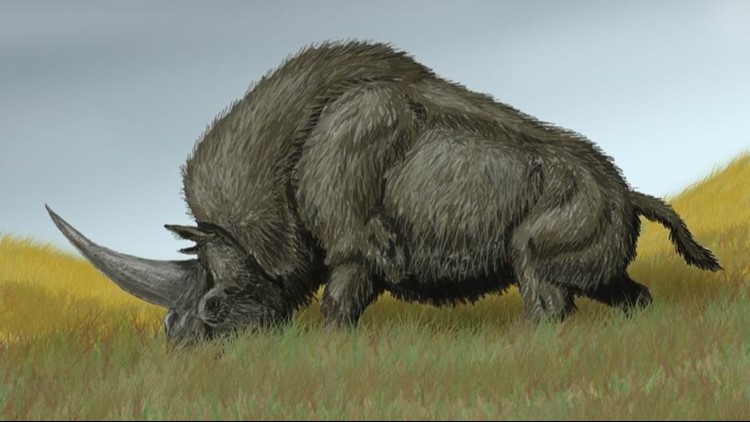Thanks to improved fossil dating, we now know unicorns were real -- and humans lived alongside them.
But these one-horned animals of myth were actually much hairier -- and not quite as elegant -- as the sparkly, rainbow-colored creatures we think of. The hump-backed, burly Elasmotherium sibiricum was an Ice Age giant capable of weighing as much as two modern rhinos. Its crown was a massive single horn on its head.
Despite its heft, the E. sibiricum -- known as the Siberian unicorn -- is thought to be a fast runner.
The new findings that suggest the Siberian unicorn lived at the same time as the first humans were published by a team of scientists in Nature Ecology & Evolution. The journal said it was previously believed that the Siberian unicorn went extinct around 200,000 years ago -- before the "Quaternary megafaunal extinction event."
However, new radiocarbon dating of 23 specimens shows that the Siberian unicorn was still around in the grassy plains of Eastern Europe and Central Asia until at least 39,000 years ago. This was around the same time the Neanderthals went extinct and modern humans had already appeared.
The Natural History Museum in London said it is unlikely that the Siberian unicorn was hunted into extinction. It's much more probable that the creatures died off because of "dramatic fluctuations in climate" along with a unique feeding lifestyle and low population numbers, the museum said.
In short, it's likely climate change and picky eating pushed the majestic beast into extinction.
The BBC talked with Professor Adrian Lister of the Natural History Museum in London about the study, which Lister led. He and others who are part of the study say knowing more about the Siberian unicorn's extinction could help save dying species of modern rhinos.
With just five species of rhinos left on the planet, few survive outside of protected parks and preserves because of habitat loss and poaching for their coveted horns. Studying these prehistoric species can help show how these creatures adapted to a changing climate and human interference.
►Make it easy to keep up-to-date with more stories like this. Download the 10News app now.
Have a news tip? Email desk@wtsp.com, or visit our Facebook page or Twitter feed.



